The Pros and Cons of Kangaroo Leather
Quick, where does your leather come from? Cow, calf, or sheep, usually, but there’s another option that you need to know: kangaroo. Kangaroo leather, also sometimes called K-leather, is what most people would call an exotic leather, though that term typically brings to mind rare and exalted animals. In truth, kangaroos are to Australia like deer are in North America, where they outnumber humans two-to-one — many consider them pests and they’re far from rare.
That might make you feel better about picking up some kangaroo boots and contributing to controlling their population. When we saw the release of Grant Stone’s Ottawa boot in kangaroo leather, we decided to take a closer look at this unusual leather and explain why it’s worth adding to your collection.
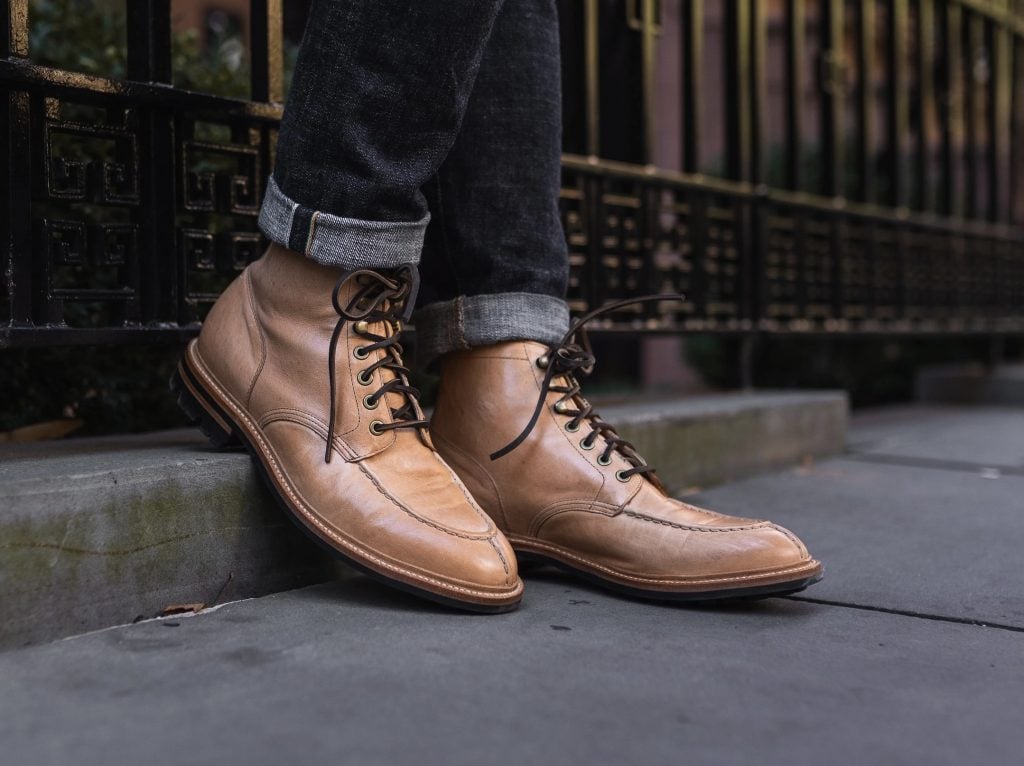
Strong and Supple
Kangaroo leather is lighter, stronger, and more flexible than goat or cow hide. It’s usually thinner too, given you can make tough-as-nails kangaroo boots with skin that’s barely a millimeter thick. (Cowhide boots are usually 1.4 to 2 millimeters.) Unsurprisingly, this means that they make a much lighter final product: kangaroo leather boots usually weigh half as much as comparable cow-leather ones.
All that’s because the skin of the animals themselves are very different. The collagen fibers that make up kangaroo hide are fine, concentrated, highly uniform, and parallel to the surface of the skin, unlike cow skin’s irregular, bundled structure. Kangaroo hide also has very low fat content and a thin grain layer, without sweat glands and erector pili muscles, which means it doesn’t require the splitting and shaving that some other leathers require (hence the resulting thin, supple, strong leather). Plus, elastin is evenly distributed throughout the skin, which means it’s uniformly stretchy. All of these factors give kangaroo leather a ton of tensile strength: it can stand being pulled apart.
One of the most common uses of kangaroo leather is in whips because it’s super supple. It’s flexible enough to be easily braided and whipped through the air. Another popular use for kangaroo leather? Motorcycle suits, where it’s highly valued for its resistance to tearing and abrasion. And that’s a serious testimonial to k-leather’s toughness. Think about it, in the kind of sport where a mistake leaves you smeared across the asphalt, you want the only thing between your skin and a bloody, bloody disaster to be as tough as possible. Kangaroo leather is that thing.
Kangaroo leather comes in both chrome-tanned and veg-tanned varieties, so you’ll want to check out the difference between the two before you buy.
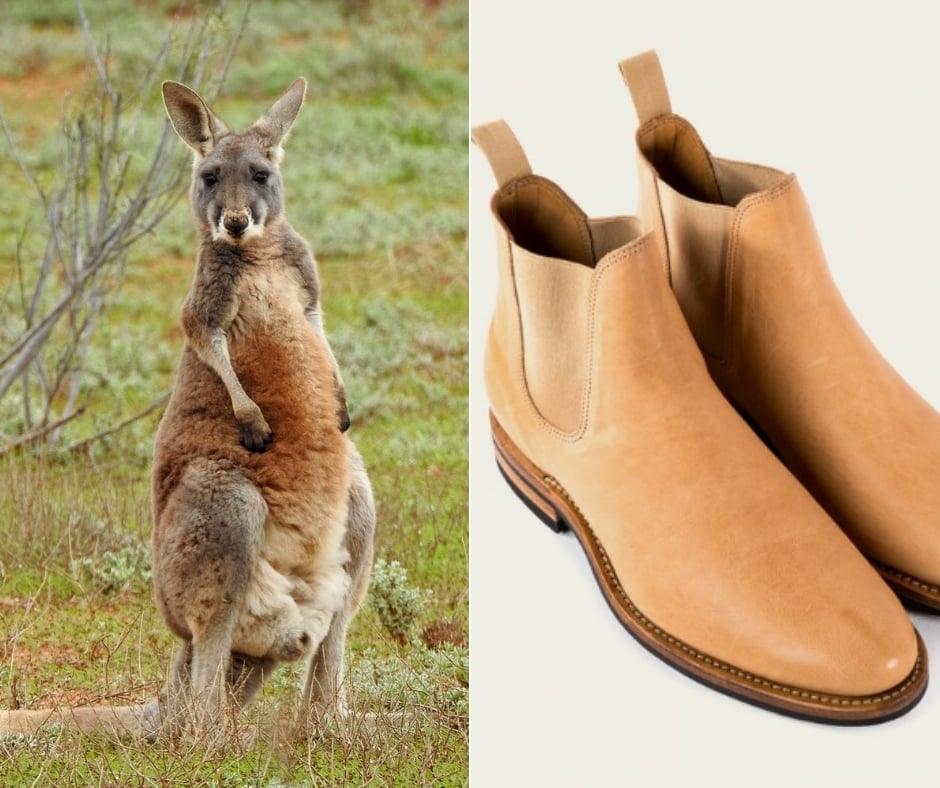
Why Are Kangaroo Leather Soccer Cleats So Popular
Kangaroo leather is the most common type of leather used in manufactoring soccer cleats. Its uniform fiber makeup is key to its popularity in the soccer world. The microscopic makeup of the leather gives it excellent properties that are practical for playing on the field and striking the ball.
- Resistance: Due to its uniform fibers, footwear crafted out of kangaroo leather distributes energy evenly around the area of impact. This avoids microfractures in the leather that would eventually lead to it cracking.
- Durability: Due to the fiber’s shield-like properties, kangaroo leather cleats will outlast affordable ones made from synthetic materials.
- Strength To Weight Ratio: Kangaroo leather is naturally lighter in weight per meter. It does not need to be skived down to the appropriate thickness for manufacturing. Cowhide of the same thickness is roughly 3x weaker than kangaroo leather.
- Tailor-Made Feel: Due to the fiber’s interweaving, rope-like structure, kangaroo leather cleats experience subtle expansion around the contours of the foot, causing the upper shape to the wearer much faster.
The Downsides of Kangaroo Leather
K-leather has a noticeable grain and does crease easily, though that creasing doesn’t usually lead to cracking because of the strength of the collagen fibers. Unless it’s corrected, it’s usually not the smoothest leather — almost all kangaroo leather has scars. It’s not the shiniest either, kangaroo has a matte texture that develops a patina quickly and it darkens faster than other leathers as well.
This is, of course, all a matter of preference, and there are plenty of folks who happily trade off a shiner, more perfect-looking leather for a lighter, stronger, more flexible one that will develop character quickly. We can’t make that call for you, it just depends on what you’re looking for and what’s already in your wardrobe.
[Related: My list of The Best Boots for Men]
Why Is Kangaroo Leather Banned In California
California is notorious for being quick to regulate goods and services that can potentially be harmful to people or the environment. One such regulated good is kangaroo-based products. California’s ban on imported kangaroo leather and meat started in 1971 when American conservationists saw a huge decline in Australia’s kangaroo population. Following their expert assessment, kangaroos were put on the US endangered species list, and soon after, even Australia banned the exportation of kangaroo products. The bans were not heavily enforced on the Australian side and for 3 decades, Australian politicians and ‘roo export giants lobbied American lawmakers to remove the animal from the American endangered species list. The American banned was lifted in 1995 but it still exists in California today.
A Brief Timeline On California’s Kangaroo Ban
The issue is way more complex and political, maybe a tad bit too much for this outlet. But in short, California’s ban was not unanimously agreed upon and for decades now, legislators have gone back and forth to the voting floor to discern what the right approach is. In recent times, California’s ban has been cited as a precedent for Oregon legislators totally their own state ban.
- 1971 – American experts deemed kangaroo populations were declining rapidly
- 1973 – Australia banned the exports of kangaroo products
- 1974 – 3 commercially hunted kangaroo species were classified to be endangered and the US banned ‘roo imports
- 1995 – The US lifted the ban but California’s ban remained in place
Kangaroo Leather vs Cow Leather
Even at a glance, cowhide and kangaroo leather have some visible differences. Going back to what was said before, kangaroo skin lacks sweat pores. The absence of these pores gives the hide more surface area filled with skin fibers. The densely packed fibers provide kangaroo leather with a superior structural makeup compared to cowhide. To the untrained eye, the kangaroo will resemble shell cordovan leather, another tough leather that is considered to be one of the best in the industry.
How Is Kangaroo Leather Better Than Cow Leather?
Kangaroo leather can be skived down and still retain much of its strength. For example,
- Cow leather when skived down to 20% of its original thickness only retains about 2% of its original strength.
- Kangaroo leather when skived down to 50% of its original thickness only retains about 50% of its original strength.
Rose Anvil demonstrated this in his video titled, Is kangaroo the world’s strongest leather? by stretching out pieces of kangaroo and cow leather of the same thickness on an engine press. In his experiment, the cow leather tore at 15lbs and 17lbs of pressure respectively while the kangaroo leather was abe to widstand up to 37lb of pressure.
To test each leather’s resistance to sharp objects, Rose Anvil placed the 2 types of leather in a ring-crafting mold and applied force on a nail to puncture the pieces of leather. The nail tored through the cow leather with only 16.5 lbs of pressure. It took nearly twice as much force to pirece the kangaroo leather with the leather having been pierced at 38lbs of pressure.
How is Cow Leather Better than Kangaroo Leather?
Cow leather only trumps kangaroo leather in abrasion resistance. In Rose Anvil’s experiment, they placed the 2 types of leather on a belt sander and timed how long it took before the leather fibers desintergrated. For cowhide, the belt tore through the leather in 1 minute and 38 seconds, and kangaroo leather only lasted 1 minute and 17 secomds.
Despite this thouugh, kangaroo still has double the the tear and punture resustance as cowhide so it’s safe to say that kangaroo leather boots will fair much better for most people.
The Big Con
The real con of kangaroo leather is the fact that it comes from kangaroos and people have a lot of feelings about kangaroos. Adidas’ most popular soccer shoe of all time, the Copa, is made from kangaroo leather — but their marketing typically calls them “k-leather” to avoid putting anybody off. That said, there are a lot of people who argue kangaroos are pest animals whose numbers are reasonably kept down with annual culling. This means eating the meat and turning the hides into leather for, say, your new boots, is the responsible thing to do.
On the other hand, there are lots of environmental activists who strongly disagree. A quick google and you’ll find lots of phrases like “the Australian killing industry,” concerns about how humane the culling process really is, and lots and lots of photos of kangaroos looking plaintively cute.
We can’t really make this call for you except to say that kangaroo are not an endangered species and leather is always made from dead animals. If you’re okay wearing leather, then you’re more than likely to be fine wearing kangaroo leather.
The Verdict
Kangaroo is a strong, supple, durable, light, and long-wearing leather that makes boots that will last you for years. If you’re the kind of guy who’s looking for the character of an easy patina and doesn’t mind explaining the fact that kangaroos are certainly pest animals, then it’s definitely worth investing in a pair.
[Related: My list of The Best Boots]
Featured image via Viberg.

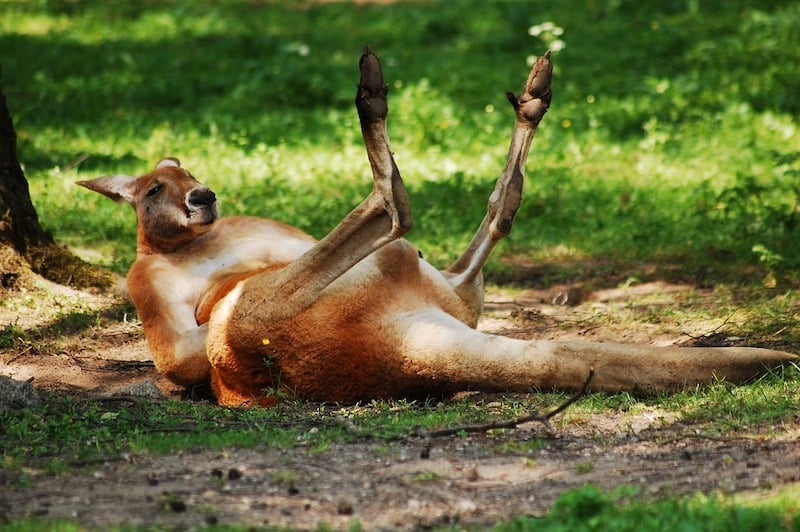

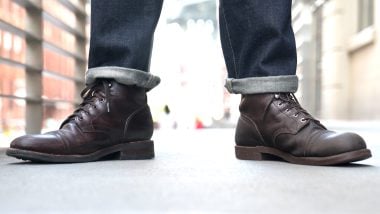
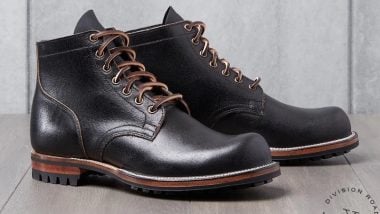
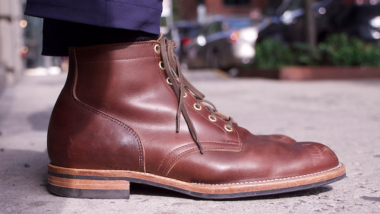





Interesting and helpful article. I’ve been thinking about getting Kangaroo RM Williams, happy to learn that it’s not too delicate or weak of a leather, and why it is so.
Awesome! Hope you enjoy them, Armin.
Your article is informative.
Since kangaroo leather is strong, supple, durable, light and long-wearing, I think it may be quite suitable for jackets.
Where in Australia people can buy kangaroo leather jackets? (cities? stores?)
You’d have to Google that one, Sam!
I was issued kangaroo skin boots in the Australian Army and can guarantee that the leather is tough and light. Pretty much scuff proof as well.
Haha that is excellent, and of course the Australian army would issue them. Thanks for the comment, Nathan!
Hey Nick, I like roo shoe leather and jumpin’ jacket leather too! Has anybody thought about making rat wraps? Went to NY once and there was some size 13s with xtra wide soles near the hotel climbing out of a drain! Just a thought of shoes there…. Great article!
hahaha! Thanks for brightening my morning, Kevin.
You should mention that according to the Higgs MSI, the environmental impact of K-leather is less on every single metric than vegan leather, and 5 times less that any other leather.
Got damn that’s a good inclusion. Got a link?
Did you know tat more than 400,000 joeys are either bludgeoned to death or left to die alonde after their mother’s have been killed by the commercial kangaroo industry?
No. Do you have a source?
Would Kangaroo Thonging be suitable for Lanyards
Sure, it’s hard to break
Native animals are NOT pests, invasive humans are. There is no need to slaughter native fauna – they managed their populations themselves just fine for millennia. White people think the environment only exists for their own enrichment.
Fair point
Thanks, I have a kangaroo bullwhip. I never want to hurt any species, but I trust the facts. Thanks for your input
Delighted you found this article, Dustin